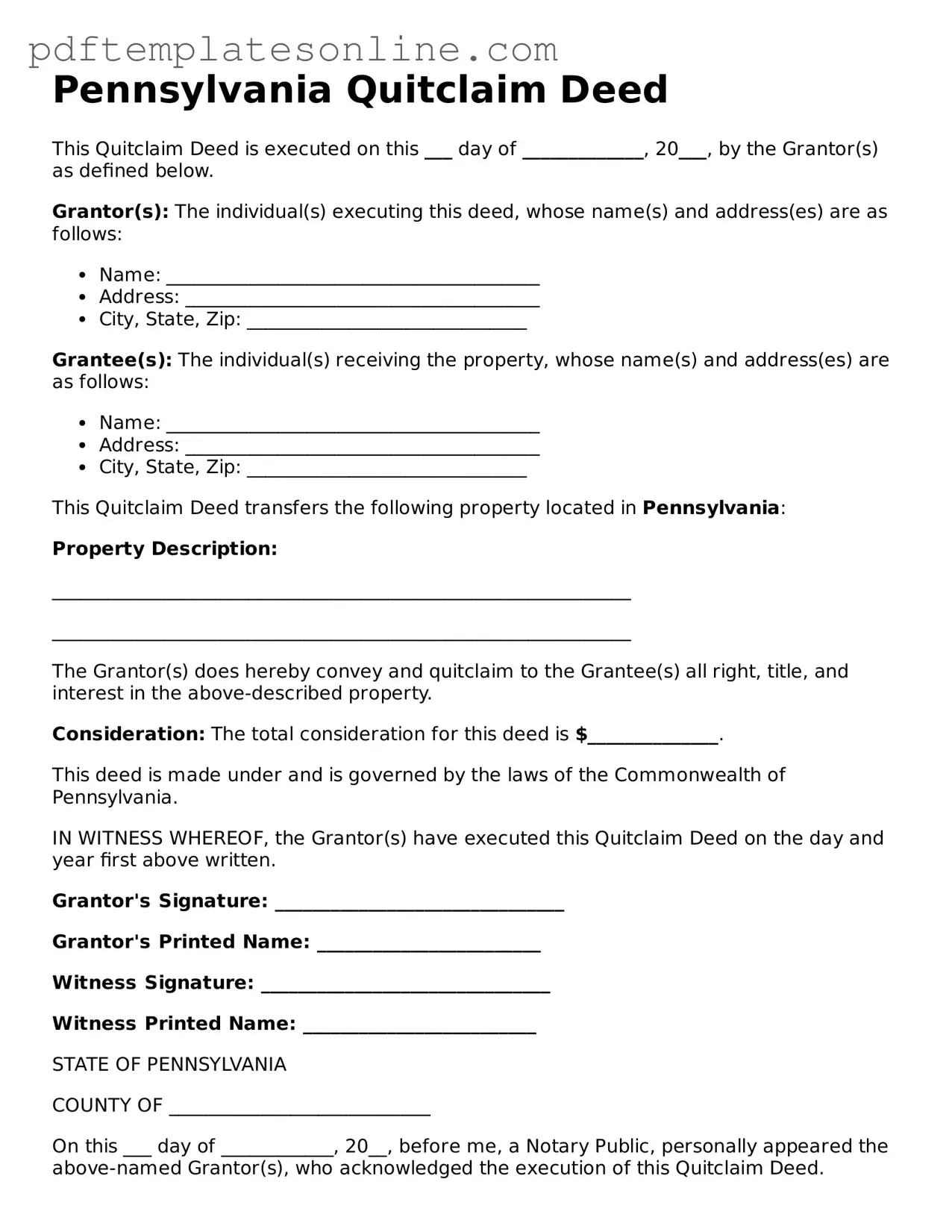Filling out a Pennsylvania Quitclaim Deed form can be straightforward, but many people make common mistakes that can lead to problems later. One frequent error is not including the correct legal description of the property. This description must be precise. Without it, the deed may not be valid, and ownership could be challenged.
Another mistake involves failing to sign the deed properly. All grantors must sign the document, and if one signature is missing, the deed may be considered incomplete. Additionally, the signatures must be notarized. Neglecting this step can render the deed unenforceable.
People often overlook the importance of including the consideration amount. This is the value exchanged for the property. Even if the transfer is a gift, stating a nominal amount is necessary. Leaving this blank can lead to confusion or disputes in the future.
Some individuals mistakenly use outdated forms or versions of the Quitclaim Deed. Laws and requirements can change, so it's crucial to use the most current version. Using an old form may lead to complications or rejections when filing.
Another common error is not providing the grantee's full name and address. The grantee is the person receiving the property, and their information must be accurate and complete. Incomplete information can delay the processing of the deed.
People sometimes forget to check for any liens or encumbrances on the property before transferring ownership. If there are existing debts tied to the property, the new owner could inherit these issues. It's essential to conduct a title search to avoid surprises.
Finally, many individuals fail to record the Quitclaim Deed with the appropriate county office. Recording the deed is crucial for establishing legal ownership. Without this step, the transfer may not be recognized by the state, leaving the new owner vulnerable to claims from others.
